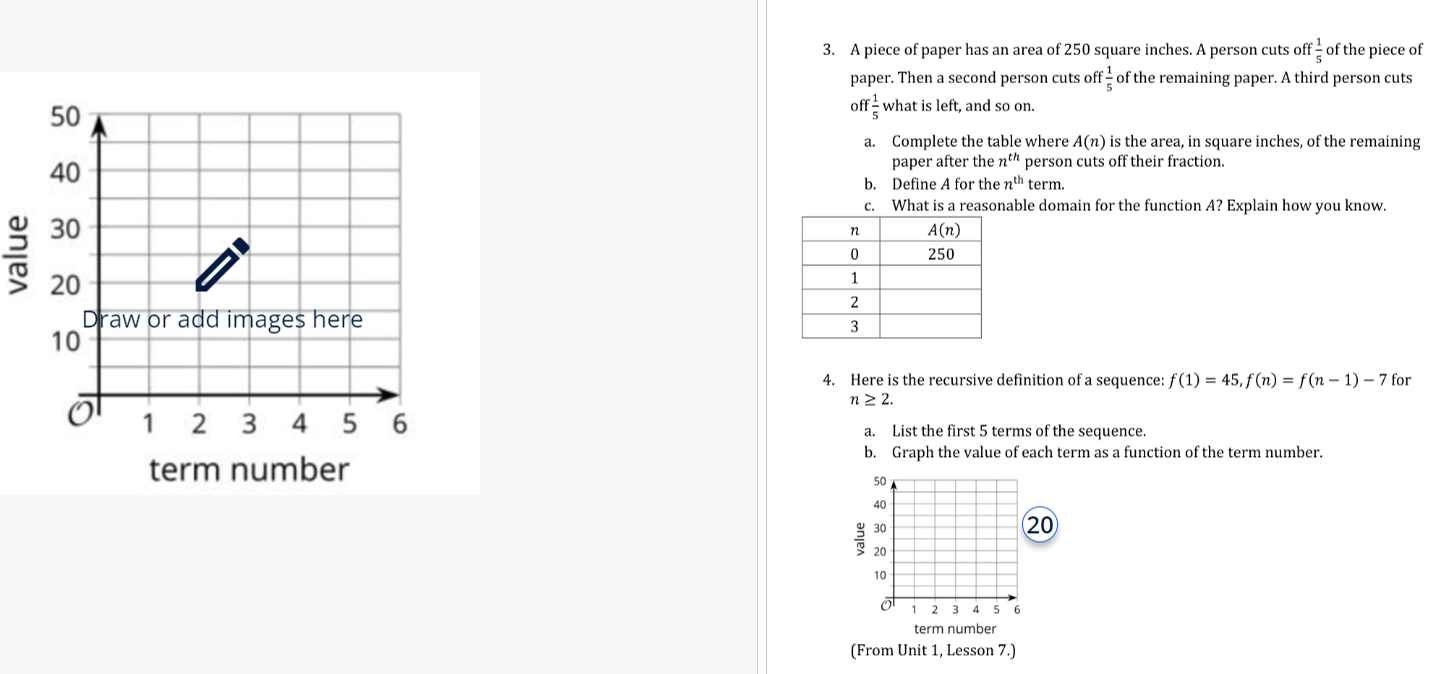AI tutor
Welcome to Bytelearn!
Let’s check out your problem:

term number. A piece of paper has an area of square inches. A person cuts off of the piece of paper. Then a second person cuts off of the remaining paper. A third person cuts off what is left, and so on.a. Complete the table where is the area, in square inches, of the remaining paper after the person cuts off their fraction.b. Define for the term.c. What is a reasonable domain for the function ? Explain how you know.\begin{tabular}{|l|l|}\hline & \\\hline & \\\hline & \\\hline & \\\hline & \\\hline\end{tabular}. Here is the recursive definition of a sequence: for .a. List the first terms of the sequence.b. Graph the value of each term as a function of the term number.(From Unit , Lesson .)
More problems from Interpreting Linear Expressions
QuestionGet tutor help

